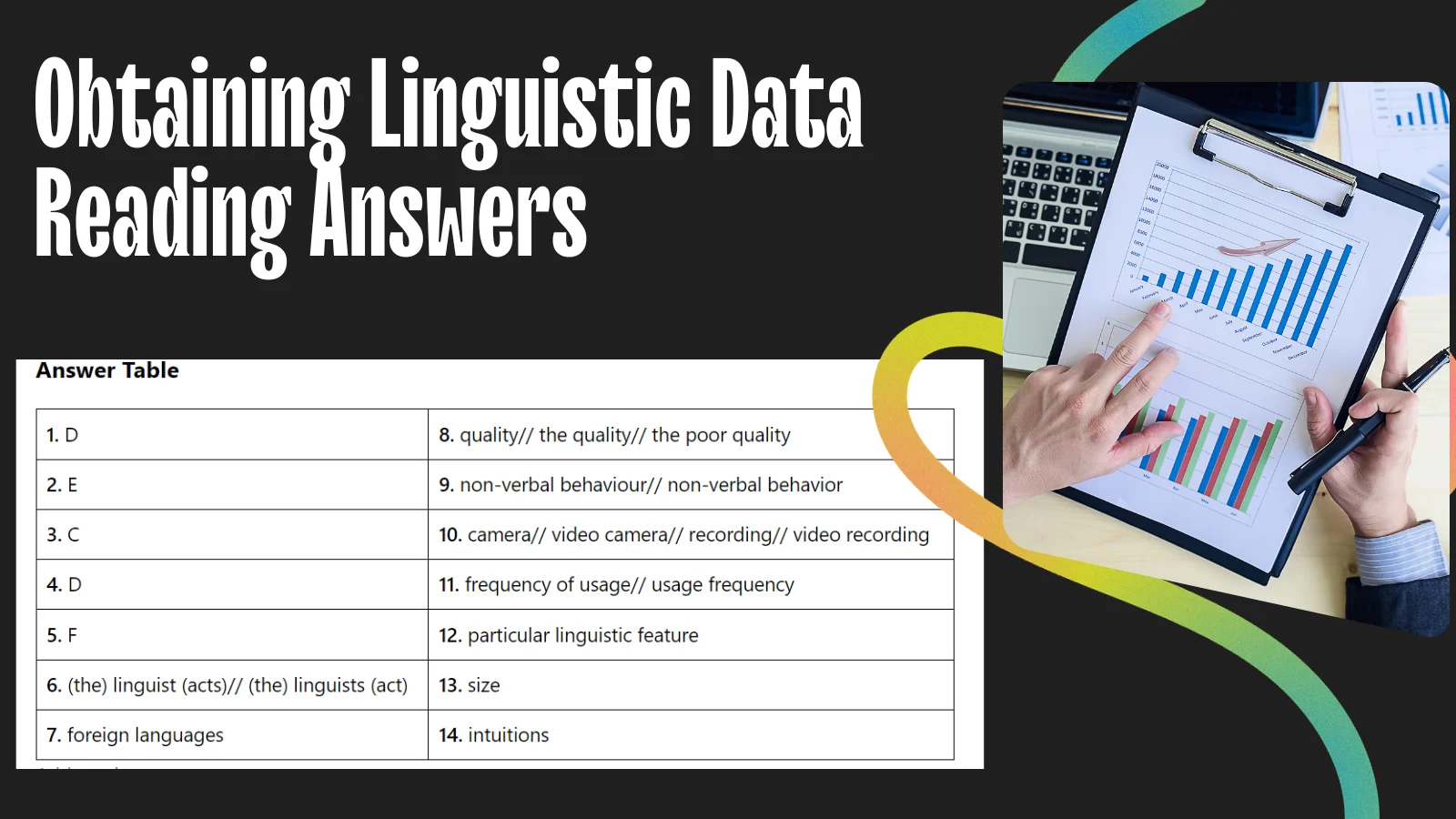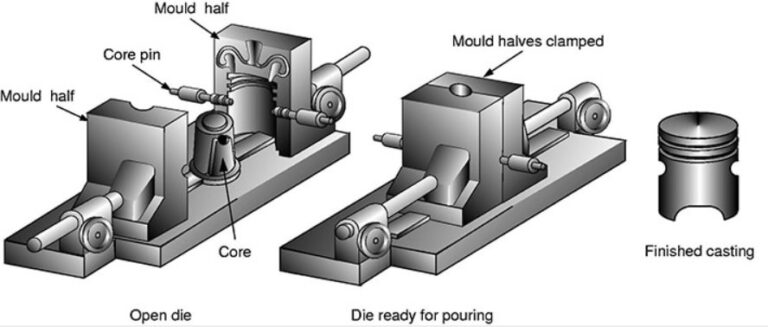Obtaining Linguistic Data Reading Answers

Contents [show]
Answer Table
| 1. D | 8. quality// the quality// the poor quality |
| 2. E | 9. non-verbal behaviour// non-verbal behavior |
| 3. C | 10. camera// video camera// recording// video recording |
| 4. D | 11. frequency of usage// usage frequency |
| 5. F | 12. particular linguistic feature |
| 6. (the) linguist (acts)// (the) linguists (act) | 13. size |
| 7. foreign languages | 14. intuitions |
Understanding Linguistic Data and Improving IELTS Reading Skills
If you’re preparing for the IELTS reading test, diving deep into linguistic data can be beneficial. We’ve curated a helpful table of answers related to linguistic data. By cross-referencing your answers with ours, you can pinpoint areas of improvement.
Breaking Down Linguistic Data Reading Answers
The IELTS reading test comprises three sections with a total of 40 questions. The challenge? Finish within the 60-minute timeframe. No extra minutes are granted, so practice is crucial. Our practice tests, especially those based on linguistic data, are a fantastic way to hone your answering skills.
In the “Obtaining linguistic data” passage provided, you’ll find a variety of answer types to familiarize yourself with. Following the passage closely and taking note of key information is essential. Before we dive into the reading practice, here’s a brief overview:
The Essence of the Passage
The passage elaborates on the methods and nuances of obtaining linguistic data. It emphasizes the importance of the source from which the data is obtained, such as from native speakers or linguists themselves. Moreover, it discusses the pros and cons of various data collection methods, such as recordings and the use of informants. Special attention is given to the creation and utilization of corpora in linguistic studies.
Key Takeaways Before Starting:
- The passage contains examples connected to linguistic data. Mark these for reference.
- Understand the type of question you’re dealing with before attempting an answer.
- Key points in the passage will guide you to the right answers.
- Reviewing answer explanations is a great way to understand the rationale behind each answer.
The IELTS Reading Practice
Following the guide above, attempt the reading questions. To check your answers, a detailed explanation for each question, sourced from the passage, has been provided. This breakdown will aid in understanding the context and reasoning behind each correct answer.
Expanding Your Reading Horizon
In addition to the “obtaining linguistic data reading answers” passage, there are numerous other reading materials available for practice. Topics range from the nuances of communicating styles and conflict, to intriguing subjects like the intersection of health sciences and geography. These diverse readings will further enhance your preparation.
In Conclusion
The “obtaining linguistic data reading answers” passage and its subsequent answers are a fantastic way to grasp intricate linguistic concepts and prepare for the IELTS reading test. By consistently practicing and reviewing, you’ll find yourself better equipped to tackle the challenges of the test. So keep practicing, keep learning, and best of luck!
Also Read: Unveiling the Power of Web Scraping: How It Revolutionizes Data Collection





